Minerals are everywhere! Items we use daily, like computers (silicon), our toothpaste (fluorite), electrical wiring (copper) contain minerals. They also give rocks their many colors and sometimes shiny, sparkly materials. The study of minerals is called ‘mineralogy’.
How do minerals form?
Minerals form naturally as crystals when hot liquid rock, or magma cools. The location and how long it takes magma to cool affects the crystals that will make up a mineral. When magma is hot, the molecules move quickly but as it cools, they slow down and move close together. The forming crystals begin to connect into patterns. If magma cools slowly, the crystals are larger because they have more time to grow. Volcanic glass forms when magma cools rapidly.

Gemstones
Rare minerals, like diamonds, form deep in the earth’s crust by heat and pressure. When the earth’s plate shift, the movement forces these minerals to the surface where they can be mined. Diamonds, rubies, sapphires, opals are all gemstones.
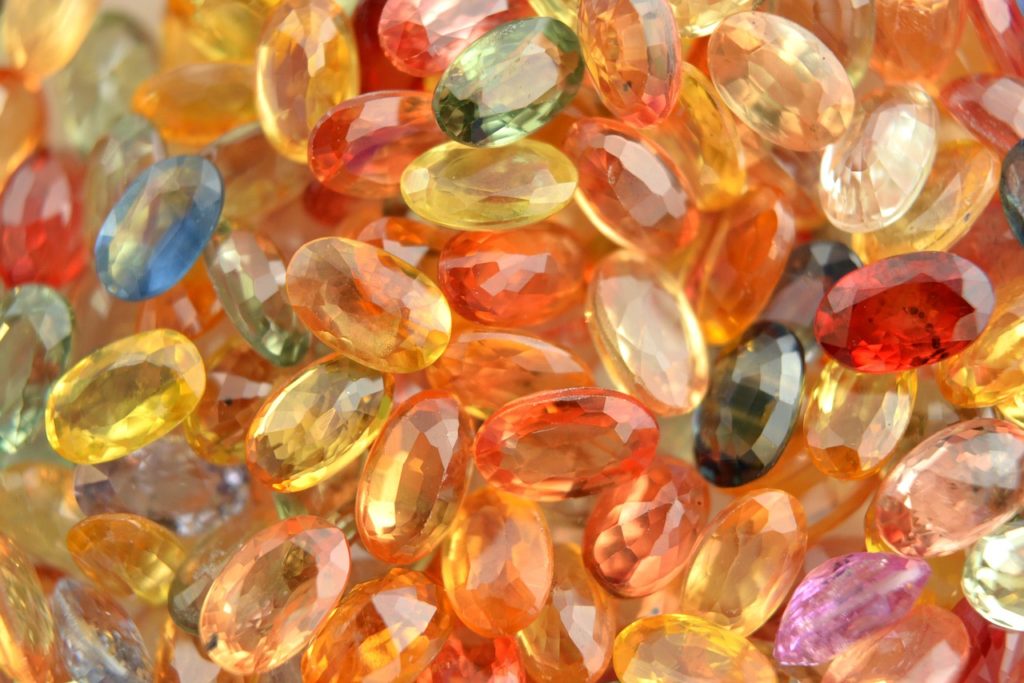
Surface Mining
Mining is the process that removes gemstones from the earth. The two ways that minerals can be removed from the earth are called surface mining and subsurface mining. When a company surface mines, they remove minerals that are near the earth’s surface by blasting the rock . Mining sometimes involves terracing and scraping the earth’s crust. Trucks transport the rocks to a foundry where the minerals will be extracted. Companies are beginning to realize how important it is to replace and replant the mined areas.

Subsurface Mining
Removing minerals from deep inside the earth is a lot of work. Subsurface Mining can be dangerous and harmful to the area. This video shows how one company extracts nickel and copper and what occurs to restore the balance of nature.
Treasures of the Earth Mineral Lab
We use minerals all the time in our daily lives. The computer you are using contains the element, silicon, which comes from Quartz crystals. Our bodies need minerals to remain healthy. That is why you hear commercials stating that products like cereals, juices, and other foods are fortified with vitimins and minerals. This lab will introduce you to a few items that you might have in your home or maybe use on a daily basis.
Minerals are Nonrenewable Resources
Minerals take a long time to form so we need to use them wisely and avoid waste. Practicing conservation of our nonrenewable resources means that we should recycle or reuse items instead of sending them to a landfill.
Rock and Mineral Hounding
Collecting rocks and minerals doesn’t need to be complicated. Just about everyone starts out by picking rocks that catches their attention. You might choose a rock based on color, sparkliness, weirdness, or shape. What matters, is that you like it! Sooner or later, you are going to want to know more about the sparkliness of your rock, or why your rock looks like a snowstorm.
Effigies
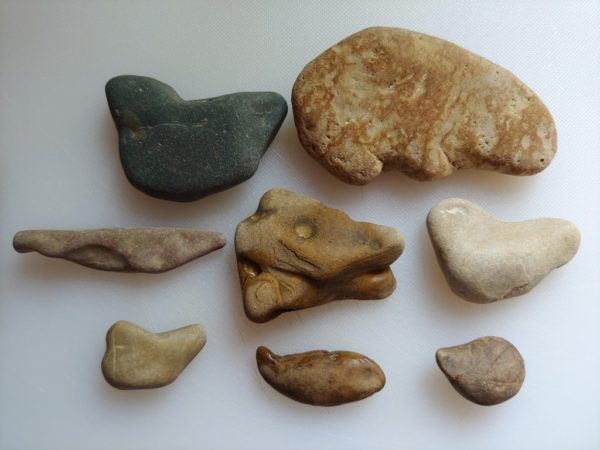
Like everyone, I pick up rocks because they are pretty and catch my eye. But most recently, I started noticing odd rocks as I was playing in local rivers and creek beds. The unique shapes aren’t pretty or sparkly, but they did catch my attention. I took my oddities home, cleaned them with a brush, and let them hang out on my kitchen counter for a few days.
While cleaning one of my finds at home, I realized it looked like a bird. Upon a closer look with a magnifying glass I saw that it had an eye and a little brushed wing etched into the stone. Little did I know, I had picked up a few stone effigies. These artifacts represent a person or animal. Suddenly, I wanted to know more about the artist who made them, the people who used them, and how stone made their lives easier. Rock hunting will take you on some unexpected journeys.
Identifying Minerals in Rocks
Think of a rock like a treasure chest brimming with minerals. Recognizing the the most common types that make up our collectibles is fascinating.
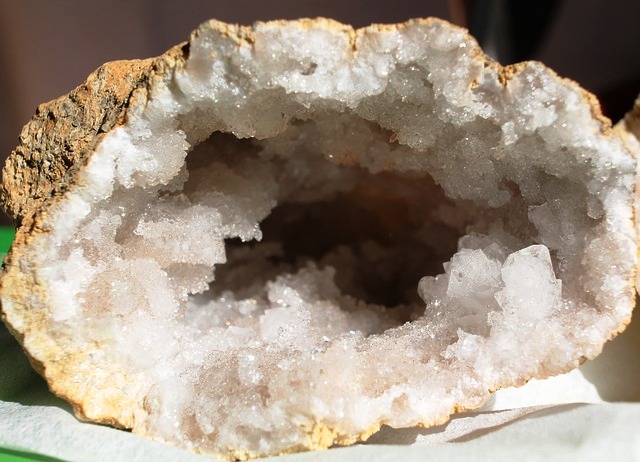
What’s that mineral?
For most of us rock hounds, we are going to chose rocks based on the different colors we see. Minerals give rocks their color and whether they sparkle. Recognizing the mineral by color, shape, or luster can tell what kind of rock we are adding to our collection. Sometimes we can determine minerals based on color, but this can cause problems, because some come in many colors. Quartz comes in almost every color imaginable.
Besides color, we have to also look at the luster. Sometimes rocks display more sparkle than others. A sparkle might look sparkly like sugar or shiny like a metal. Luster is how the light bounces off of a mineral. Rocks are not always sparkly, they might look glassy, dull, waxy, or oily – the adjectives are endless!
Granite: An Intrusive, Metamorphic Rock
Granite is a good rock to start with when learning about minerals. Formed in a magma chamber deep under the earth’s crust, granite cooled slowly, giving the minerals time to grow. The crystals are easy to see, but sometimes zooming in on the rock really gives it perspective.
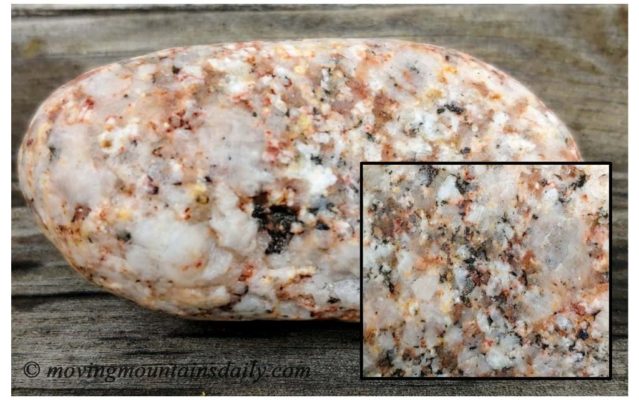
Light vs Dark Crystals
When examining any rock, wet it with water, then check out the light and dark crystals. The light colors or felsic minerals are easier to determine than the dark crystals. Start by identifying the felsic minerals first.
Felsic – The Light Colored Minerals
Feldspar and Quartz are ‘felsic minerals’ and are the two most common on earth. Feldspar is the most abundant of the two, and makes up 60% of the earth’s crust. It can come in cloudy shades of off white, white, red, orange, brown, and green. It has a glassy luster that flashes in the light, and a block-style shape.
Quartz, on the other hand, has curvy, irregular shapes and glitters in the light. It comes in an endless array of colors but most of the time it is gray or clear colored. All types of granite have high concentrations of Feldspar and Quartz.
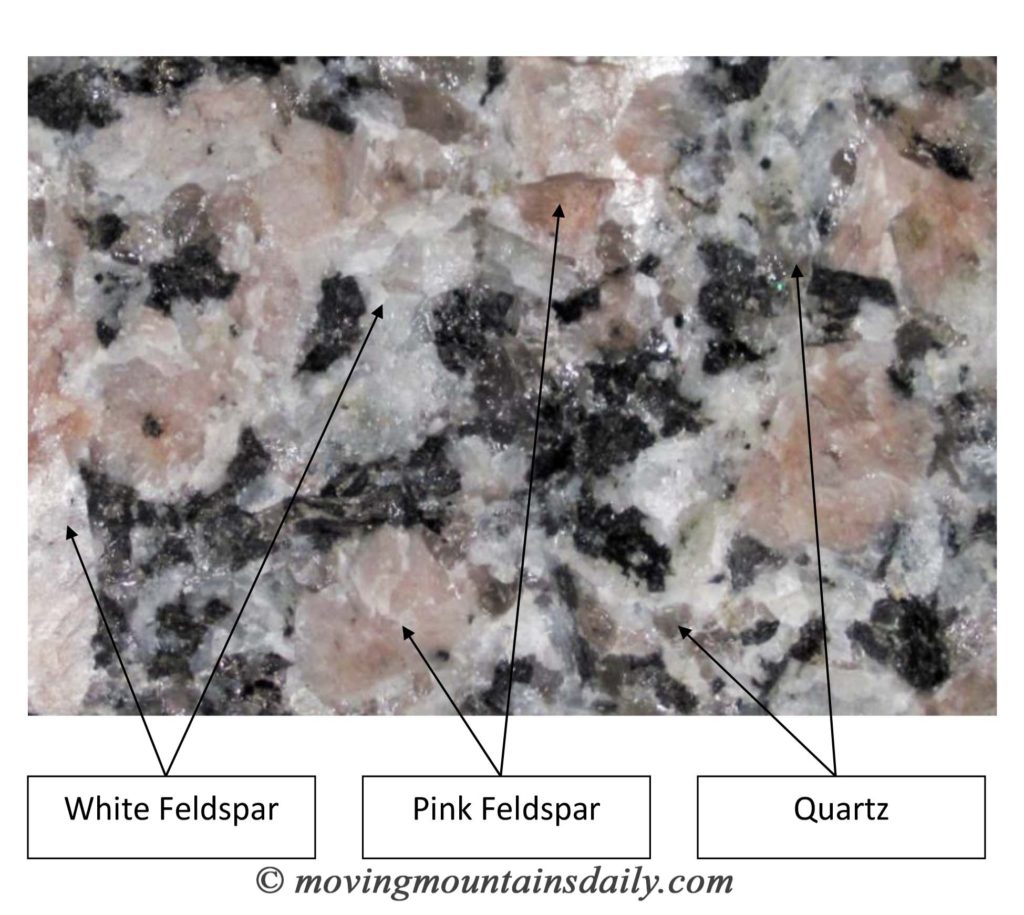
Mafic – Dark Colored Minerals
The dark colored minerals called ‘mafic‘, are rich in magnesium and iron, and are more difficult to distinguish than the light colored, felsic crystals. We will look at two most common black minerals, called biotite and hornblende.
Biotite
Biotite is a book-shape, shiny crystal, that flash when it catches light. It can be black, dark brown, brownish-green, and sometimes yellow or white. Biotite crystals form in thin sheets and look stacked, like pages of a book, thus the geologists describe it as ‘book shaped’.
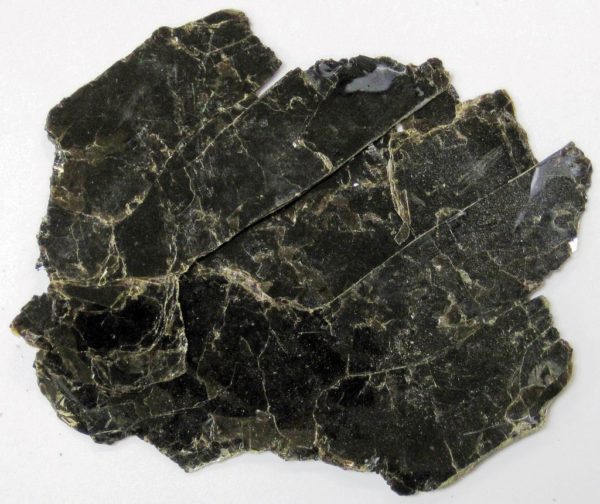
It is part of the ‘mica’ group of minerals.
Hornblende
Hornblende (below) is a classroom name for the dark rectangular, flattened prisms found in the photo below. It is part of the Amphiboles group of crystals that are rectangular, glossy black or dark green crystals.

Now that we know a few of the dark grains, let’s go back to the pink granite and add the mafic minerals to the photo. This particular granite contains mostly biotite.
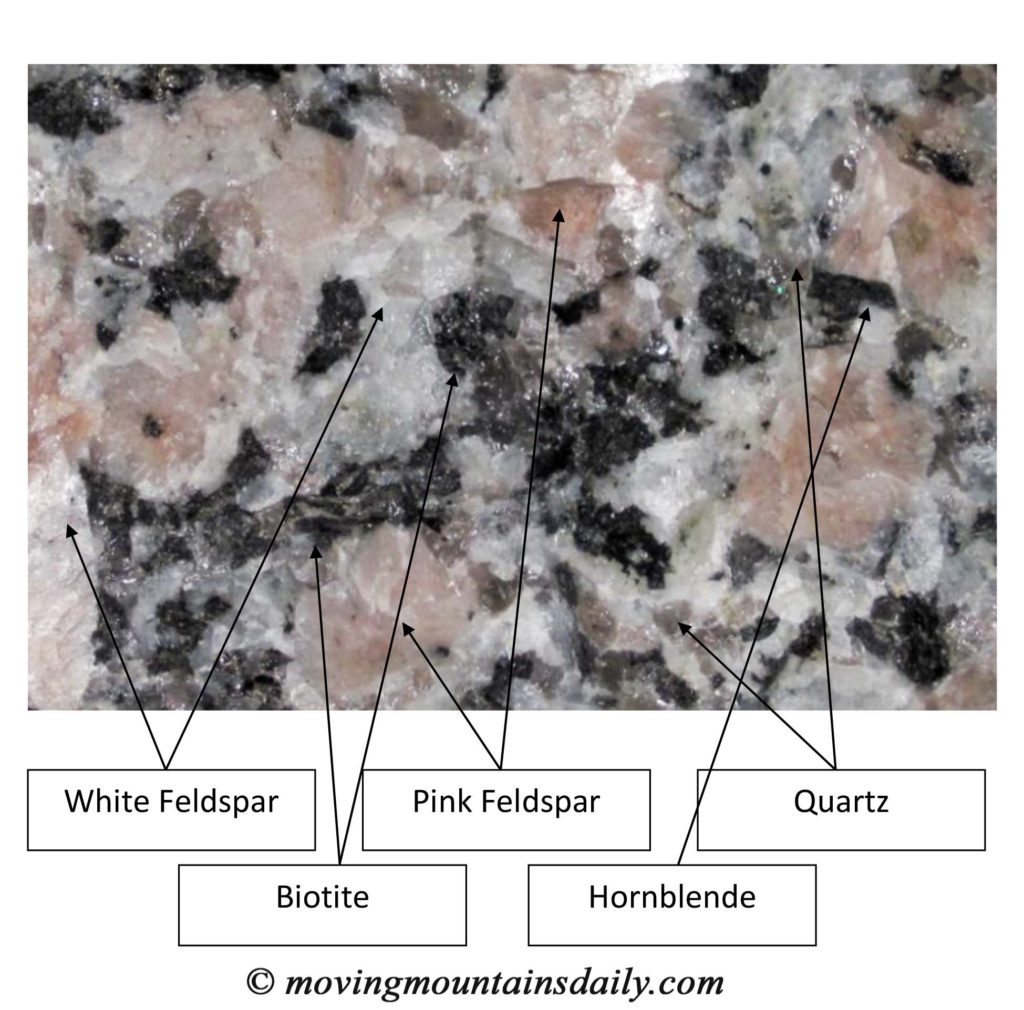
Look closely
You can now recognize feldspar, quartz, biotite, and hornblende. Look closely at each specimen you choose. What makes it interesting? What are the colors or luster? Is it sparkly, shiny, or does it flash? Being able to determine the common minerals, and knowing which type of rock you have in your collection will help you determine your rock’s history – because – every rock has a story!
Surprised by a Rock!
I picked up this rock on the shores of Lake Michigan because it was a soft, pretty green. Recently, I took a photo and zoomed in for a closer look. Wow! I didn’t expect to see the colors that magnification produced! Check this surprise out!

Keep Flippin’ Those Rocks!
Rock and mineral hunting is a great way to have fun over the summer. In the next post you will learn about the three rock categories and more about minerals! Keep your eyes down, and remember: Leave no stone unturned!
Now that you know Minerals are Everywhere, check out, “Every Rock has a Story” and solve the Puddingstone Mystery.
We love comments! Tell us a mineral or rock story!


